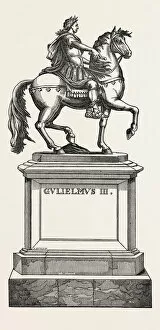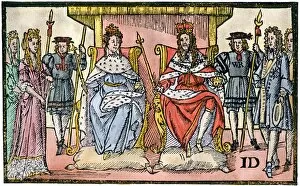King William Iii Collection (#6)
"King William III: A Legacy of Leadership and Triumph" In the annals of history, one name stands out as a symbol of resilience, courage, and triumph - King William III
For sale as Licensed Images
Choose your image, Select your licence and Download the media
"King William III: A Legacy of Leadership and Triumph" In the annals of history, one name stands out as a symbol of resilience, courage, and triumph - King William III. Born as William of Orange in 1650, he would go on to become a pivotal figure in European politics and shape the destiny of nations. One defining moment that etched his name into history was the Battle of the Boyne in 1690. Depicted in an evocative engraving from 1890, it captures King William III at the height of his power. With unwavering determination, he led his forces against James II's army, securing victory for Protestantism and forever altering Ireland's course. But behind every great leader lies a steadfast partner. Queen Mary II of Great Britain played an instrumental role alongside her husband. An enchanting engraving from 1730 immortalizes her grace and elegance while highlighting their shared reign during this transformative era. To understand King William III fully is to delve into those who influenced him profoundly. Dr W. Sherlock, depicted in a captivating image from 1830, was one such individual whose counsel shaped royal decisions during these tumultuous times. Another influential figure was Sir W. Temple; his impact on King William III cannot be overstated. As portrayed in an intriguing engraving also dating back to 1830, Temple's wisdom guided the king through treacherous political waters with finesse and sagacity. While surrounded by advisors like Dr Sherlock and Sir Temple, it is important not to overlook figures like Radcliffe - individuals who provided invaluable medical expertise during this period marked by war and uncertainty. Yet amidst all these influences stood Mary herself - Queen consort but also a formidable presence within her own right. Her portrait from 1830 radiates strength despite personal tragedies she endured throughout her life. The Bill of Rights Presented to William and Mary serves as testament to their commitment towards a constitutional monarchy.



